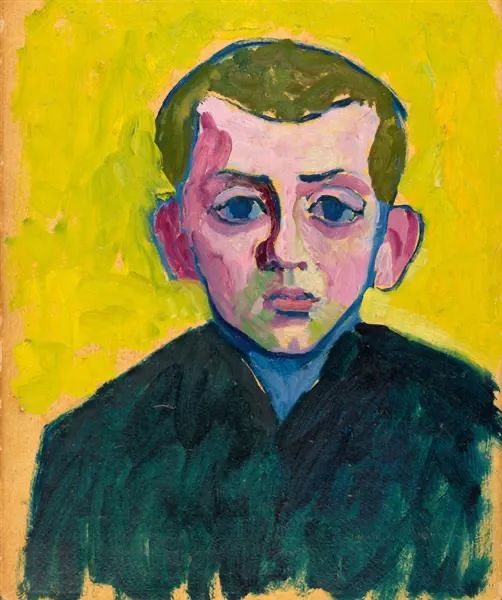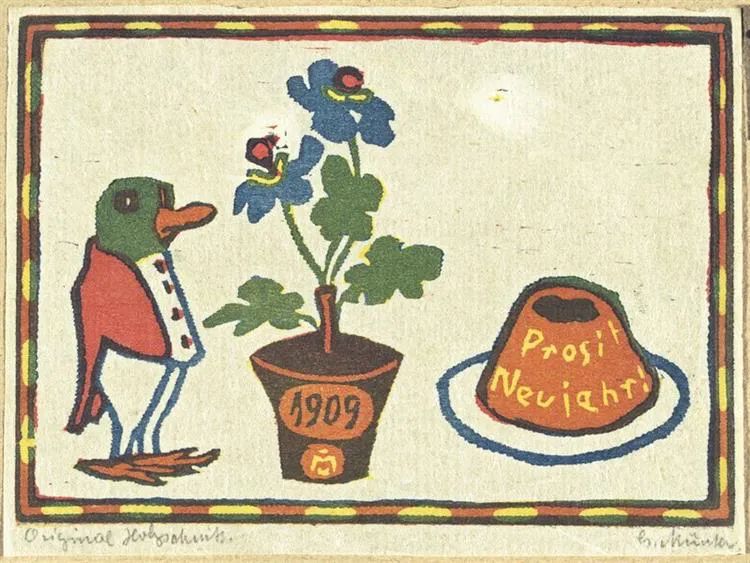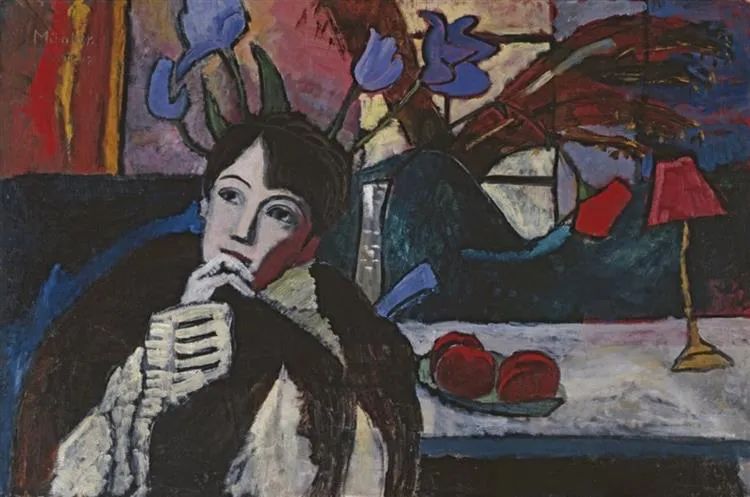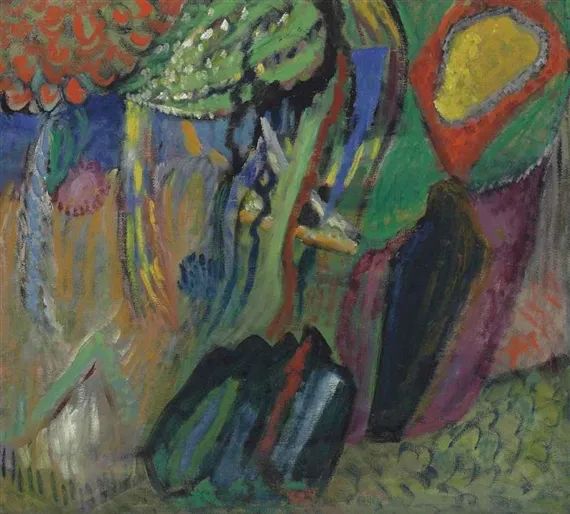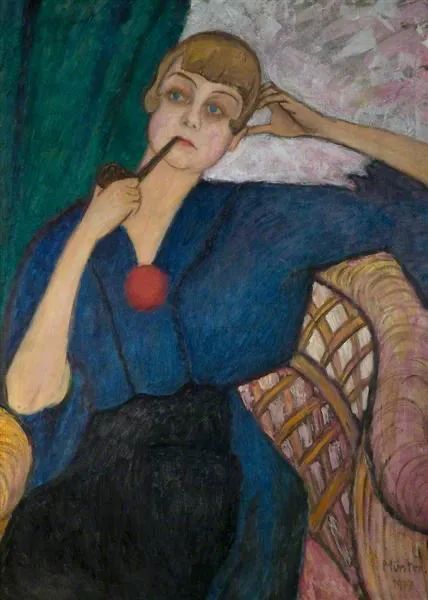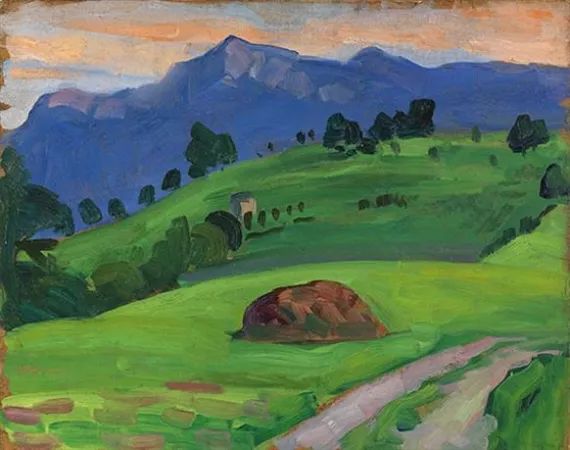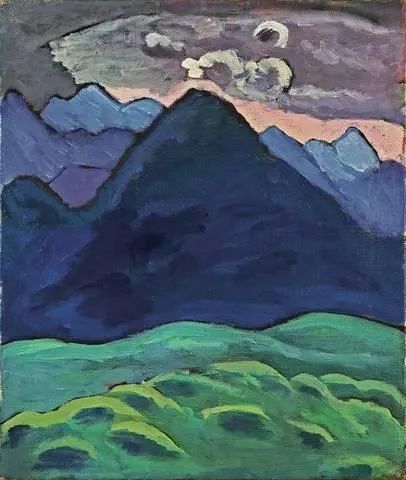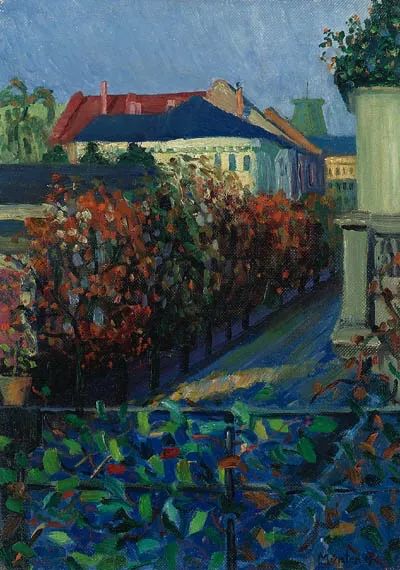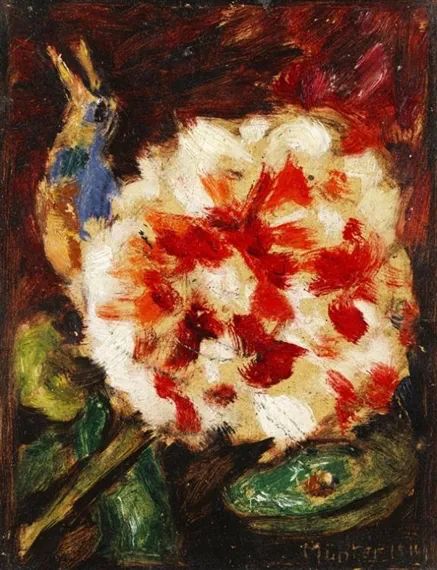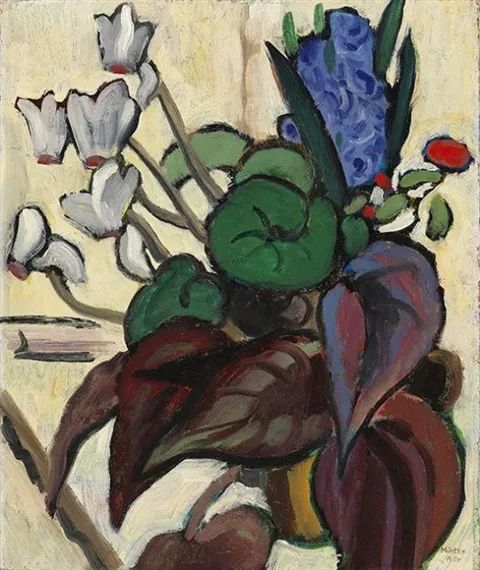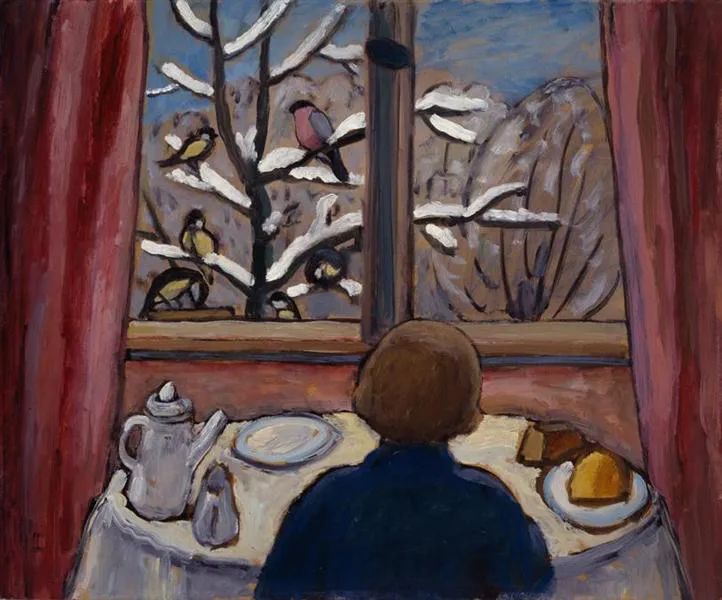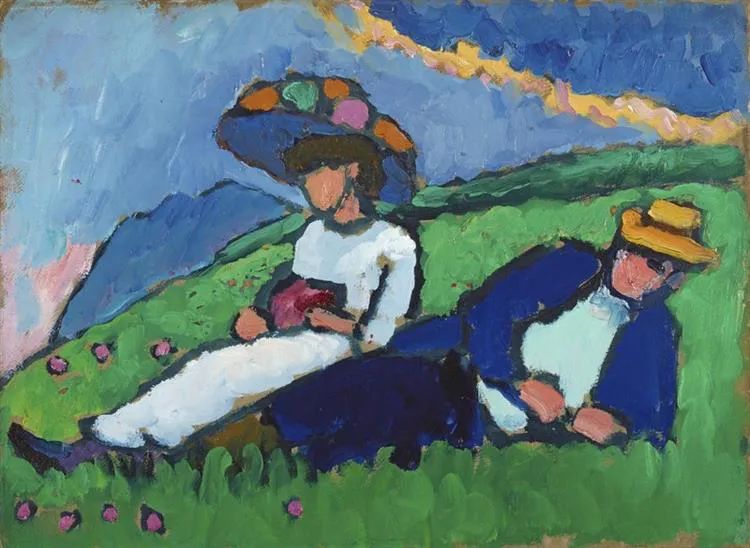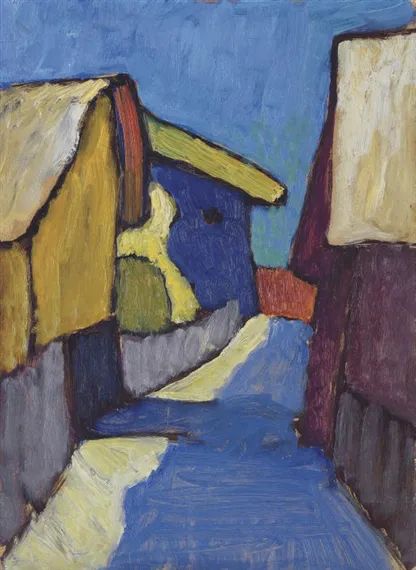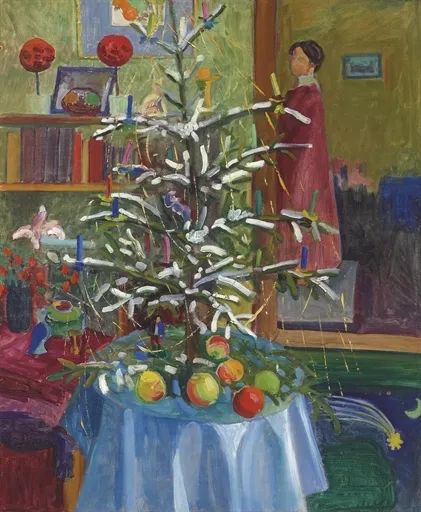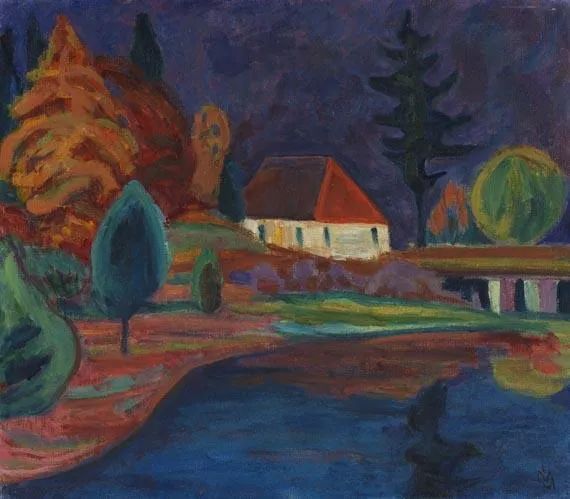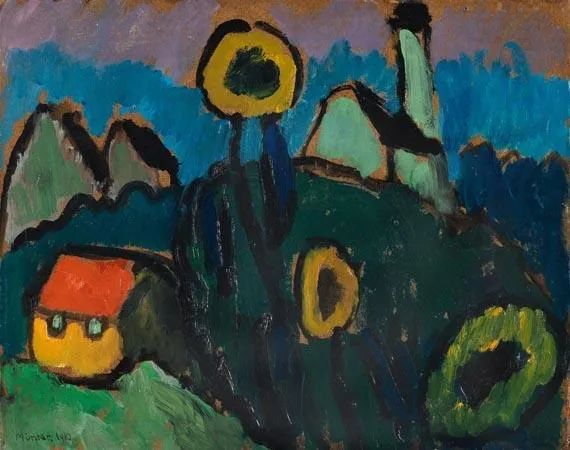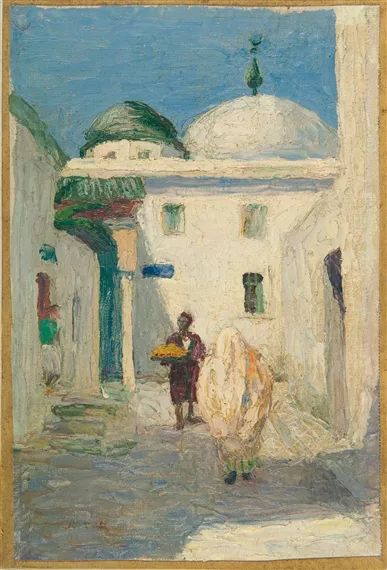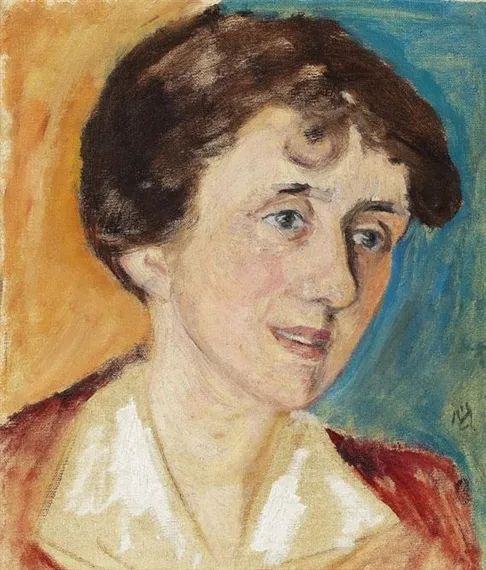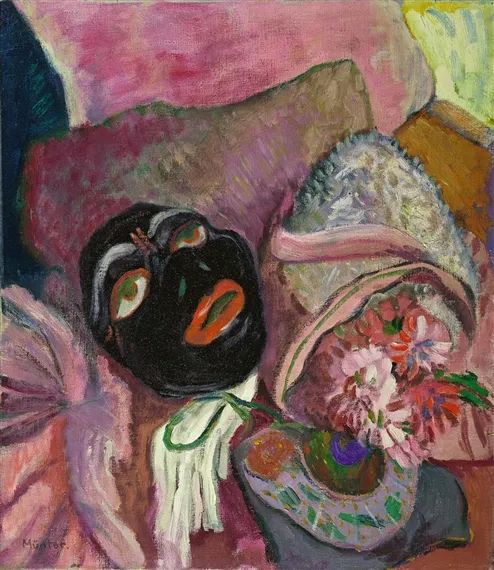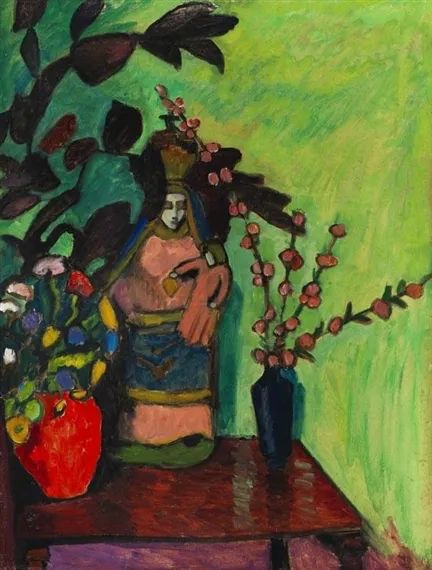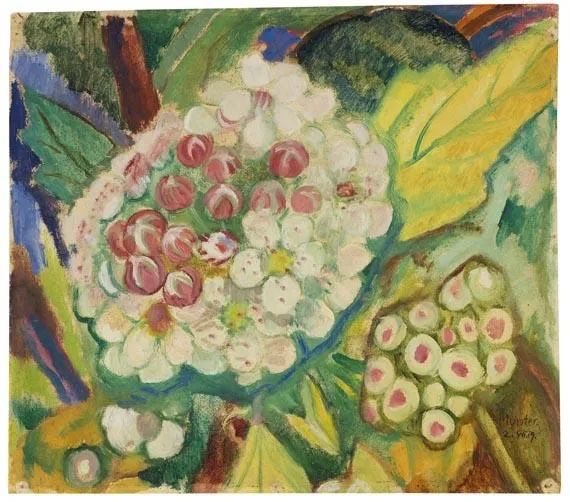Gabriele Münter (Berlin, 19 February 1877 – 19 May 1962) was a German expressionist painter who was at the forefront of the Munich avant-garde in the early 20th century. She studied with the painter Wassily Kandinsky and was a founding member of the expressionist group Der Blaue Reiter.
Münter was born to upper middle class parents in Berlin. Regardless of the times, her family supported her desires to become an artist. She began to draw as a child. As she was growing up, she had a private tutor, and took classes at the Woman’s Artist School, since she was not allowed to enroll in the German Academies because she was a woman. She didn’t feel challenged by her current school, so she decided to take her studies elsewhere. Both of her parents had died by the time she was 21 years old, and she was living at home with no occupation. In 1898, she decided to take a trip to America with her sister to visit extended family. They stayed in America for over two years, mainly in the states of Texas, Arkansas, and Missouri; six sketchbooks survive from Münter’s period in America, depicting images of people, plants and landscapes. Both girls had inherited a large amount of money, allowing them to live freely and independently. Her childhood and early adulthood greatly impacted her future artistic career. She had a free and unrestricted life that was unconstrained by convention. Living in America and Europe had given Münter social exposure that many women did not have at the time. Münter studied woodcut techniques, sculpture, painting, and printmaking. Soon after she began taking classes, Münter became professionally involved with the Phalanx School’s director, the Russian painter Wassily Kandinsky. This eventually turned into a personal relationship that lasted for over a decade. Kandinsky was the first teacher that had actually taken Münter’s painting abilities seriously. In the summer of 1902, Kandinsky invited Münter to join him at his summer painting classes just south of Munich in the Alps, and she accepted.
加布里埃尔·米是一位德国表现主义画家,在20世纪初处于慕尼黑先锋派的最前沿。她师从画家瓦西里·康定斯基(Wassily Kandinsky),是表现主义团体“蓝骑士”(Der blue Reiter)的创始成员。
她出生在柏林的中上阶层家庭。无论在什么时候,她的家人都支持她成为一名艺术家的愿望。她从小就开始画画。在她的成长过程中,她请了一位私人教师,并在女子艺术学校上课,因为她是女性而不被允许进入德国艺术学院。她觉得现在的学校对她来说没有挑战性,所以她决定去别的地方学习。在她21岁的时候,她的父母都去世了,她住在家里,没有工作。1898年,她决定和姐姐一起去美国探亲。她们在美国呆了两年多,主要是在德克萨斯州、阿肯色州和密苏里州;在美国,她有六本素描本幸存下来,描绘了人物、植物和风景。两个女孩都继承了一大笔钱,可以自由独立地生活。她的童年和成年早期都极大地影响了她未来的艺术生涯。她过着不受传统束缚的自由不羁的生活。在美国和欧洲的生活使她获得了当时许多女性所没有的社会曝光率。她学习木刻技术、雕塑、绘画和版画。在她开始上课后不久,她就与学校的主任、俄罗斯画家瓦西里·康定斯基(Wassily Kandinsky)成为了专业人士,并进入了一段持续了十多年的私人关系。康定斯基是第一位真正认真对待她的绘画能力的老师。1902年夏天,康定斯基邀请她到慕尼黑以南的阿尔卑斯山参加他的夏季绘画班,她接受了邀请。

